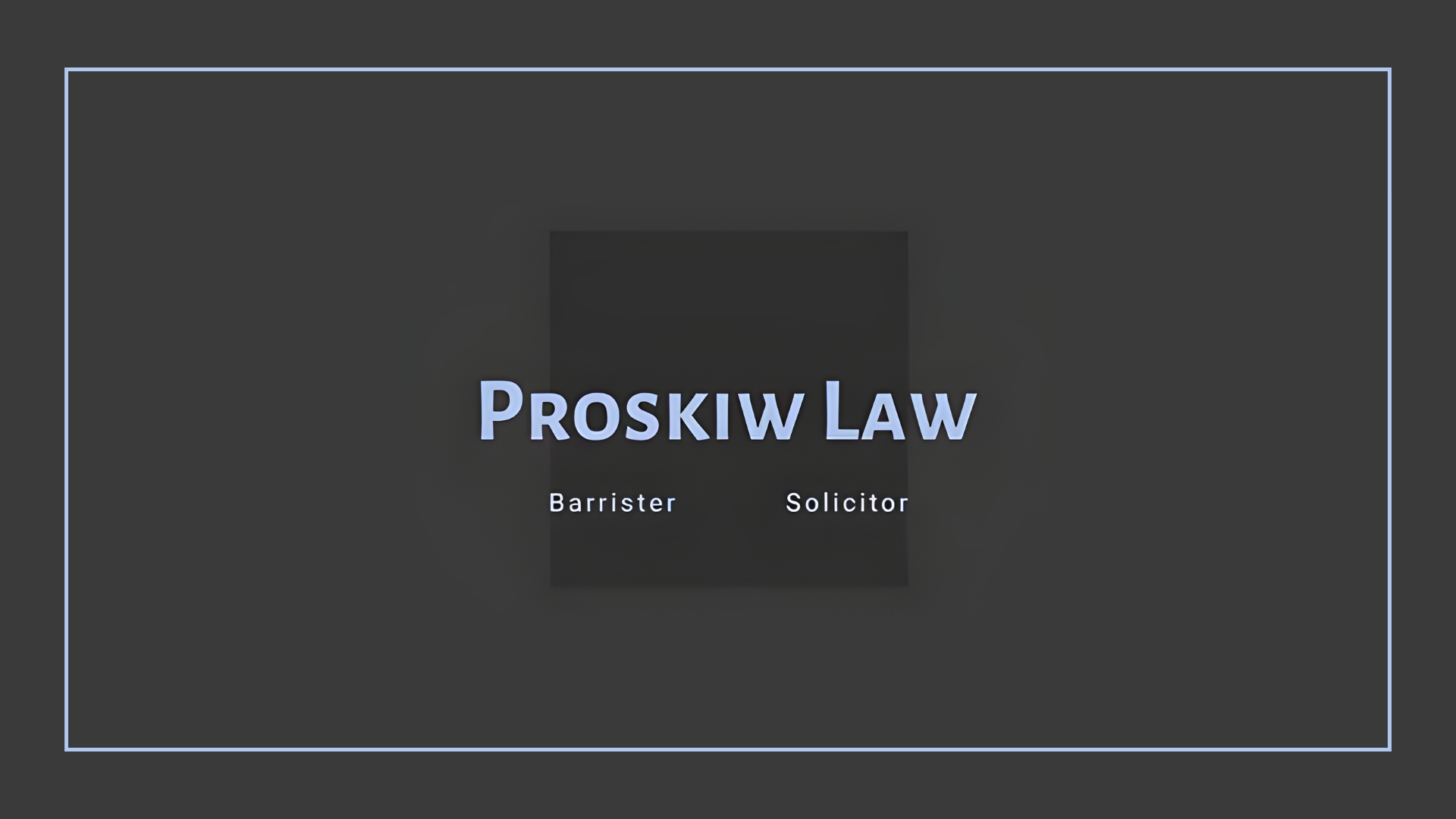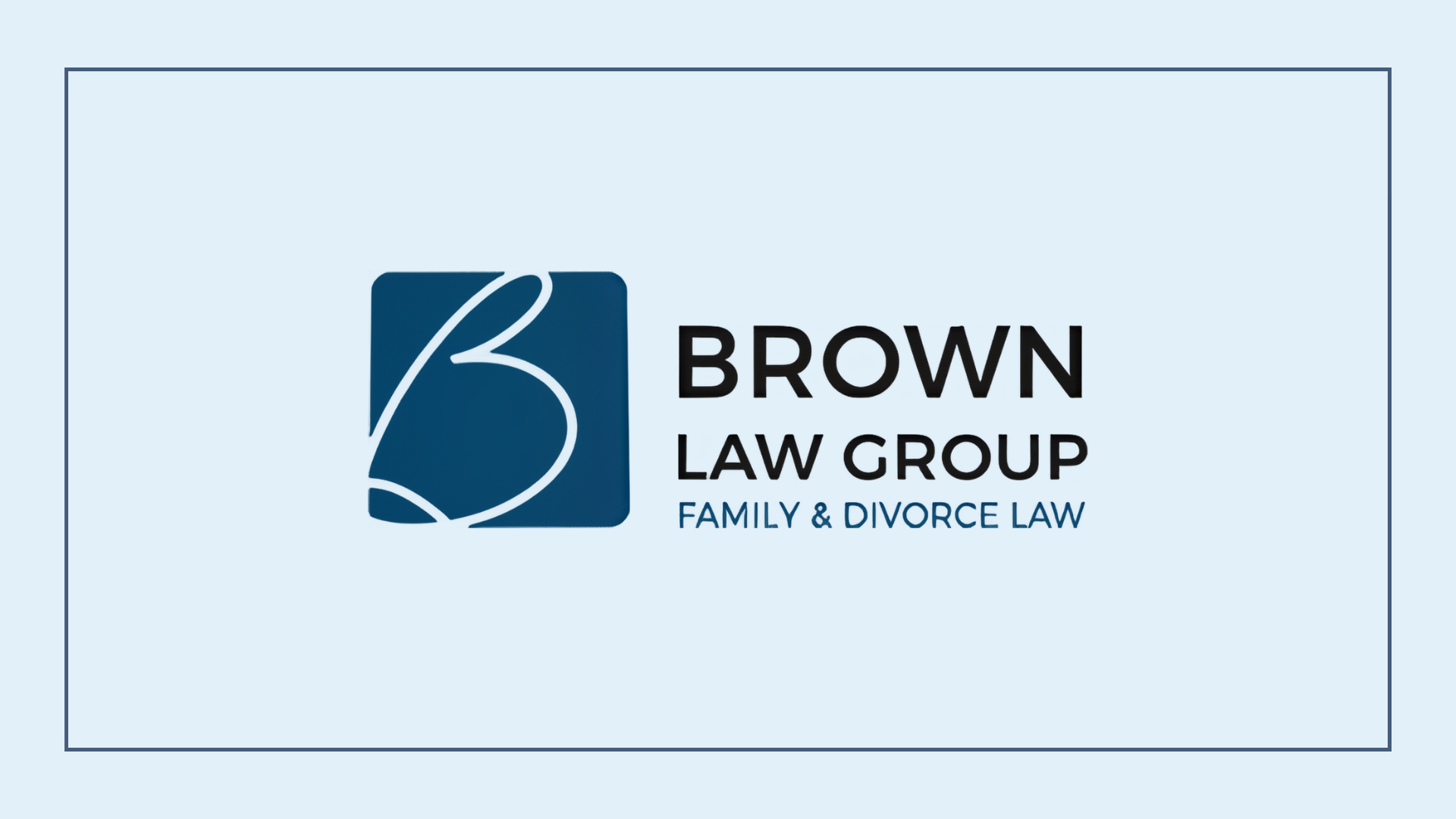Sometimes, relationships don’t end up with a happily ever after. So, to make sure that the separation is achieved more smoothly, you may need the services of the best divorce lawyers in Edmonton.
Luckily for you, our picks for the best divorce lawyers in Edmonton can help you with make sure that the process is much easier. We took a look at their reputations, client reviews, and their success rates to determine our top picks.
Bit before we take a look at our choices for the leading divorce lawyers in Edmonton, you’ll need a little background on fees first.
How Much Does a Divorce Lawyer Cost in Edmonton?
Typically, family and diivorce lawyers employ an hourly rate with the average cost in Edmonton averaging to about $200 to $600 per hour. Students-at-law and paralegals are billed out at a lower rate, while some firms offer a “limited scope” retainer, which means they’ll provide help with a specific legal task without taking on the entire case.
Before a case is officially taken on by a lawyer, a retainer is typically required, which is essentially an advanced payment for services rendered. While the amount will depend on the complexity of the case, you can expect an initial retainer of $3,000 to $5,000.
Once the initial retainer funds have been spent, it will be necessary to pay additional advanced fees as required so that the lawyers can proceed with continuing to work on your case. To give you a general idea of cost, we’ve rounded up the average estimated hourly rate that lawyers charge in Edmonton and the province of Alberta.
| Years of Experience | Average Estimated Hourly Rate |
| 1 year or less | $205.00 |
| 2 to 5 years | $284.00 |
| 6 to 10 years | $306.00 |
| 11 to 20 years | $360.00 |
| 20 or more years | $387.00 |
Most lawyers will suggest that you gather all the necessary documents, dates, and other information before you officially schedule a consultation. Being prepared in advance helps to keep your legal fees more manageable.
On the other hand, for uncontested matters that don’t require lengthy negotiations, some lawyers charge a flat fee. The table below represents the average estimated costs for commonly offered flat rate “packages”.
| Uncontested Divorce | Simple Divorce (No Children / Support) | $1,500.00 |
| Divorce With Kids OR Spousal | $2,000.00 | |
| Divorce With Kids & Support | $2,250.00 | |
| Severance Divorce | $1,750.00 | |
| Cohabitation Agreement / Prenuptial Agreement | Property Agreement Only | $2,000.00 |
| Property & Spousal Waiver | $2,500.00 | |
| Property & Spousal Terms | $2,750.00 | |
| Combined Cohabitation & Prenuptial Agreement | $750.00 | |
| Separation Agreement | Property Agreement Only $1999 | $2,000.00 |
| Property with Children OR Spousal Support | $2,750.00 | |
| Property, Spousal & Child Support | $3,000.00 |
The Best Divorce Lawyers in Edmonton
Now that you know what to expect financially when hiring or consulting a lawyer, we can take a look at our picks for the top divorce lawyers in Edmonton.
1. Proskiw Law

| SERVICES | Family Law, Separation, Divorce, Child Custody, Parenting & Access, Child Support, Spousal Support, Property Division, Prenuptial And Cohabitation Agreements, Varying Or Changing Your Court Order Or Divorce Judgment |
| WEBSITE | https://www.proskiwlaw.ca/ |
| ADDRESS | 10060 Jasper Ave Suite 2020, Edmonton, AB T5J 3R8 |
| CONTACT DETAILS | Phone: (780) 665-4944 Fax: 1-833-815-2758 |
| OPERATING HOURS | Monday to Friday: 9:00 am – 5:00 pm |
Earning his degree from the University of Alberta, Michael Proskiw worked at a prestigious family law firm before deciding to solely dedicate his practice to family law. He has won several awards and honors, which include Valedictorian and getting on the Dean’s List six times.
His pre-law background in business and accounting helps him deal with cases that involve the financial positions of both sides in a divorce dispute where property, assets, and support are being discussed. His team will ensure that you’ll receive what is rightfully yours while keeping negotiations running as smooth as possible.
His education also helps him to explain to clients details regarding complicated taxes and other financial dealings in divorce settlements. With extensive experience in dealing with numbers, he can translate the complicated matters into simpler terms so that clients can better understand their legal options.
Aside from assisting you with current divorce proceedings, he can also help in changing your court order or divorce judgment, especially if some recent changes in your life require you to take these steps.
Finding the best solution for a client’s needs and navigating towards the best possible outcome is at the forefront of Proskiw Law. The team here is fully prepared to litigate in court if necessary, although the goal is not to let it reach costly court proceedings.
Billable by the hour, Proskiw Law doesn’t offer limited-scope retainers or legal aid packages. So we recommend getting all your documents, information, and questions gathered beforehand to keep your costs manageable.
If you need more information, you can always schedule a free 30-minute consultation so that you can briefly discuss the details of your case.
Pros
- Has background in finance and accounting
- Has received multiple honors and awards
- Free 30-minute consultation
Cons
- No limited scope retainers
- No online consultation
Client Reviews
Grant Nekolaichuk, a client, praises the professionalism of Proskiw Law. He shares:
“Proskiw Law is an exceptional law firm. Michael Proskiw is a fantastic lawyer that is responsive, creative and detail oriented. He was able to identify a significant error that my previous attorney had made, saving me a considerable amount of headaches and money if that mistake had not been caught. He represented me extremely well and I was very happy to have retained his services.”
2. Verhaeghe Law Office

| SERVICES | Common Family Law, Adultery, Child Custody / Parenting, Child Support, Child Welfare or Children’s Services Matters, Divorce, Extracurricular Activities, Financial Disclosure, Guardianship, Joint Custody, Matrimonial Property Division, Parental Alienation, Separation Agreement, Spousal Support, Criminal Defense Law, Wills, Trusts, & Probates, Civil Litigation,, Estate Litigation, Immigration Law, Legal Services, Probates & Wills, Service Area, Personal Injury, Construction Law, Criminal Law, Corporate Law, Commercial Law, Labor & Employment, Real Estate, Divorce, Estate Administration, Child Support, Commercial Real Estate |
| WEBSITE | http://www.freedomlaw.ca |
| ADDRESS | Mayfield Business Centre 10525 170 Street, Suite 203, Edmonton, AB T5P 4W2 |
| CONTACT DETAILS | Phone: (587) 410-2500 Fax: (780) 341-1428 Email: [email protected] |
| OPERATING HOURS | Monday to Friday: 8:30 AM – 4:30 PM Closed for lunch: 12:00 PM – 1:00 PM |
Verhaeghe Law Office was founded in 1956 and offers a wide array of services, ranging from immigration law to criminal law. They are well-known as one of the most comprehensive law firms in the city that can serve almost any legal need, with an experienced team of experts in litigation.
Although not technically one of their specialties, divorce proceedings are the most commonly sought-after service at this firm. They’re known for their full transparency here too, whether it’s about new developments in your case or news you don’t want to hear but need to know.
Whether it’s dealing with outstanding debt, division of property, or negotiating spousal support, the lawyers at Verhaeghe Law Office will explain things in detail each step of the way.
This means you’ll feel secure knowing that you’re adequately represented and that whichever lawyer is assigned to your case can always consult with the rest of their team.
If you have children, you can also rest easy knowing that this firm will put the child’s needs first. As experienced family lawyers, they understand that ensuring the smoothest experience during this transitional phase in your family should be one of their primary concerns.
Take note that Verhaeghe Law Office charges clients by tenths of an hour, and applies this to phone consultations and answering emails as well. So, it might be wise to plan ahead every time you communicate with your lawyer to make the most of the fees you are paying.
Regardless, they have represented clients in uncontested divorce proceedings and same-sex divorce cases as well. So whether you need assistance ironing out the details of financial support or need help with mediation, Verhaeghe Law Office can assist you with all your legal needs.
Pros
- 24/7 online assistance
- Experience handling same-sex divorce cases
- Experts in all aspects of family law
- Large team of lawyer
Cons
- Closes for lunch and on weekends
- Charges by tenth of an hour
- No free consultation
Client Reviews
Charity Durrand, a client, was going through a divorce and Verhaeghe Law Office helped make her feel at ease immediately. She writes:
“If you want to feel valued and well taken care of then I highly recommend Verhaeghe Law. I was pleasantly greeted when I first walked and didn’t wait long before I was able to get in for my consultation.I spent a lot of time researching the top law firm to help me navigate my divorce and this place is it. They have great reviews for a reason! Thank you to Richard Verhaeghe for connecting me with Joe Sumiya, I feel super confident in his experience and am happy to have him as my Lawyer.”
Bernard Quilala, another client, shares his experience:
“I was looking for new representation in my divorce and was referred to Timothy Verhaeghe by a friend. I found him to be very knowledgeable about family law and was extremely helpful in instructing me in what to do and how to proceed which was a far departure from my last lawyer. Tim was able to tell me what to expect going forward and was very upfront about his plan going forward as well as his billing practices and prices. I really appreciated his professionalism as well as his kindness in dealing with me and my case. Ive only had our initial consultation and in already feeling confident that ive chosen the best lawyer for my situation.”
3. Safi Law Group

| SERVICES | Uncontested Divorce, Guardianship, Child Custody, Parenting, Private Adoptions, Property Division, Family Agreements, Spousal Support, Child Support, Civil Litigation, Wills & Estates, Personal Injury |
| WEBSITE | https://www.safilawgroup.ca/ |
| ADDRESS | #205, 11150 Jasper Avenue Edmonton, Alberta, T5K 0C7 |
| CONTACT DETAILS | Phone: (780) 760-7234 |
| OPERATING HOURS | Monday to Friday: 8:30 AM – 4:30 PM |
Sangin “Sam” Safi established Safi Law Group in 2019 after lending his expertise to two other law firms where he acquired most of his experience.
Before he was called to the bar, though, Sam worked in various sectors such as accounting, insurance, and sales, which gives him a novel perspective when assisting clients with their cases.
Safi Law Group’s practice generally centers on litigation, with a particular focus on high-asset divorces, motor vehicle accident injury cases, and probates.
If your divorce situation cannot be reached through mediation and going to trial is imminent, then Safi Law Group is the right firm to handle your case. You can rest assured that this law firm will fight hard for what’s rightfully yours, such as property and assets.
On the other hand, his focus on high-net-worth divorces may also mean that you might not be able to acquire their services if you don’t meet certain criteria. However, Sam Safi’s experience helps him to expertly navigate the tricky paths of negotiations so that appearing in court may not even be necessary.
Although he doesn’t offer collaborative law services, you can still retain the services of Safi Law Group for uncontested divorce proceedings. This is also an amicable way for two parties to resolve their differences in a peaceful manner, especially if there are children involved.
You can send an initial consultation to Safi Law Group via a webform, to which you’ll receive a brief response with legal counsel on your next steps. However, if you expect a more detailed discussion, you’ll have to set an appointment for a face-to-face meeting.
Pros
- Diverse academic background and experience
- Specializes in high-net worth divorce settlements
- Handles all aspects of family law
Cons
- Litigation-oriented practice
- Doesn’t offer collaborative law proceedings
Client Reviews
Tareena Barkman retained the services of Safi Law Group when they were still newly established. She was satisfied with the service despite a few small hurdles, as she shares:
“We were very happy with Sam. We had met with him before he started his own firm and decided to follow him. There were a few hiccups as he got his law practice set up, but that’s to be expected with any new business. He was very knowledgeable and our adoption went through without a hitch! We were always very pleased with how easy it was to get in touch with Sam, and how accommodating he was with meeting at a time where we wouldn’t have to take off from work.”
Amy Burke also shares her experience as she writes:
“Sam was understanding of the issue, he was fair and kind, and helped me to achieve the best possible outcome. He is well versed in law and intelligent, which is beneficial when you are seeking a particular results. I found him easy to speak with, and poised. He has tact, and he is factual, and will fight for you in a fair and respectful manner.”
4. Brown Law Group

| SERVICES | Uncontested Divorce, Contested Divorce, Joint Divorce, Negotiation, Mediation, Judicial Dispute Resolution, Agreements Settlement Proposals, Formal Offers To Settle, Consent Orders, Applications For Interim Orders, Exclusive Possession Of The Home, Special Hearings, Legal Research, Case Management, Summary Trials, Trials, Appeals, Collaborative Divorce, Separation Agreements & Minutes Of Settlement, Marriage Contracts, Cohabitation Agreements, Prenuptial Agreements, Matrimonial Property Agreements, Disputes Over Children, Spousal & Partner Support, Division of Matrimonial Property |
| WEBSITE | https://brownlawgroup.ca/ |
| ADDRESS | Centre 104, Suite 612 5241 Calgary Trail NW #612, Edmonton, AB T6H 5G8 |
| CONTACT DETAILS | Phone: (780) 540-5160 Fax (780) 540-5161 Email: [email protected] |
| OPERATING HOURS | Monday to Friday: 8:30 am – 5:00 pm |
Brown Family Law provides personalized law services for those facing divorce and child custody battles. Dependable, courteous, and responsive, they’ll guide you as every step of the case develops.
Through the high-stress dealings of the divorce, they’ll be there to help with the legal matters while making it easier for you emotionally. With their readiness to take on a case, they’re among the best divorce lawyers in Edmonton.
We like Brown Law Group because their team is fluent in a number of languages, namely Spanish, Portuguese, Mandarin, French, Nigerian (Pidgin), and Filipino. Their diversity helps them cater to a number of different clients from multicultural backgrounds
It’s led by Tracy Brown, a barrister and solicitor who has extensive training in mediation, collaborative law, and parenting coordination. This puts her in the position of favoring amicable settlements instead of letting cases reach litigation.
She is also a registered Collaborative Divorce Lawyer, which makes civilized settlements smoother, especially if there are children involved. Brown Family Law Group clearly prioritizes the welfare of children in any divorce settlement, to ensure that their needs are put first.
Aside from offering clients limited scope retainers, they also accept Legal Aid Certificates on a case-to-case basis for those that can’t afford legal representation.
However, because they are a small firm, they can only take on a limited number of these at any given time, so it’s not a guarantee that you can hire them even if you qualify or have all the necessary documents on hand.
Regardless of this, Brown Law Group is one of the most transparent firms when it comes to its legal fees. They inform you upfront of your statement of account, retainer fees, and any additional expenses that may be incurred throughout the duration of your case.
Pros
- Settlement-oriented focus
- Offers financial options for those who can’t afford the retainers
- Multilingual team
Cons
- Only a limited number of Legal Aid Certificates can be accepted
- May not be suitable for cases that are headed for trial
Client Reviews
Trevor Coates said this of the firm:
“Excellent Lawyer and Firm! Tracy did an amazing job on my difficult divorce. I wish I had her years ago. Tracy would have saved me years and $10’s of thousands of dollars. Tracy responded quickly to my calls and my emails. Tracy save me money in legal fees where she could. I would highly recommend Tracy and her staff!”
Kim Reschenthaler, another client, said this:
“Robyn has helped me with a very difficult, and very time-sensitive separation agreement. Robyn has been incredible! Communicative, organized, so very helpful. She is an amazing lawyer but also a very good person.”
5. Callioux Family Law & Mediation

| SERVICES | Divorce, Custody & Access, Property, Spousal Support, Child Support, Guardianship, Common Law Separation, Legal Packages, Low Cost And Limited Scope, Wills & Estate, Parenting Time and Access, Guardianship, Adoptions, Children’s Services, Child Protection, Child Welfare, Grandparent and Foster Parent Rights, Moving with a Child, Abduction by a Parent or Family Member, Representation of Children |
| WEBSITE | https://www.calliouxfamilylaw.com/ |
| ADDRESS | 1800 Sun Life Place, 10123 99 St NW, Suite 1745, Edmonton, AB T5J 3H1 |
| CONTACT DETAILS | Phone: (780) 424-0812 Fax: (780) 425-2825 Email: [email protected] |
| OPERATING HOURS | Monday to Thursday: 7:30am – 4:00pm Friday: 8:30am – 12:00pm |
Having served as representatives of Child Welfare in Alberta, Callioux Law is well experienced in domestic legal matters as well as litigation. Their focus is on handling cases and helping families navigate cases amicably as opposed to battling it out in court.
When it comes to divorce cases, Callioux Law can assist you in the division of property and assets, which are usually the trickiest parts of any case of this type. They seek to ensure that proceedings are fair, legal and that every process is done correctly to ensure your financial security and protection.
With their background, Callioux Law provides extensive representation that puts the well-being of children first. They will seek to ensure that support and security are taken care of and that the proceedings go as smoothly as possible.
The senior partners at the firm have also developed their own mediation process called Third Side Mediation, which is intended to save money and settle issues with as little conflict as possible. It also aims to assist people to learn the inherent costs and advantages of their situation while educating them on the legal aspects.
If you’re looking at more traditional methods, Callioux Law will seek to resolve your divorce with one of four alternative dispute resolutions. These are Judicial Dispute Resolution (JDR), mediation, 4-way meetings, or arbitration – all of which don’t involve costly litigation.
One of their highlight services is their Limited Scope Retainer for those who can’t afford legal aid or the full fees. With this arrangement, a lawyer will assess the client’s case and provide legal advice, but a paralegal will provide most of the assistance by helping with documentation and guiding you through the court process.
We also like that Callioux Law offers flat-rate packages for settlements that are conflict-free and don’t need litigation or intense negotiations. These include uncontested divorces, separation agreements, cohabitation, and prenuptial agreements.
Pros
- Will prioritize children’s needs first
- Offers flat rate packages for uncontested settlements
- Has developed a unique Third Side Mediation process
Cons
- No free consultation
- Paralegals are assigned to you in limited scope retainers
Client Reviews
Stephanie Cook, a client, was pleased with the services she received from Callioux Family Law, as she writes:
“Ryan and Melissa are passionate and dedicated to their clients. They are wonderful to work with and know how to make a difficult and stressful situation seem manageable and clear. Highly recommend.”
Arina Rodionova, another client, also shares her experience:
“The service recived by the Callioux Law team was amazing. Instead of rushing my file through to court, they prepared a litigation plan that was put into action that has proven results and very little stress”
6. Latitude Family Law

| SERVICES | Divorce, Custody And Access / Parenting Time, Child Abduction, Representation Of Children, Child Support, Spousal/partner Support, Matrimonial Property Division, Common Law Property Division, Family Violence, Prenuptial And Cohabitation Agreements, Child Welfare, Adult Guardianship, Adoption, Assisted Reproduction Agreements, Simple Wills And Estates, Appeals, Commissioners And Notaries |
| WEBSITE | http://latitudefamilylaw.com/ |
| ADDRESS | #425, 10115 100A Street, Edmonton, AB |
| CONTACT DETAILS | Phone: (780) 784-0628 Fax: (780) 784-0629 |
| OPERATING HOURS | Monday to Thursday: 8:30am – 4:30pm Friday: 8:30am – 2:00pm |
One reason we like Latitude Family Law LLP is that all their lawyers have spent time working in the family law division of Legal Aid Services. This unique background gives them the experience to handle practically any case involving family law.
Moreover, all of the firm’s lawyers are still active members of the Legal Aid Alberta roster and regularly volunteer their legal prowess to the lower-income classes of Edmonton, focusing on legal assistance for those who need guidance around the justice system.
Latitude Family Law LLP also provides limited scope retainers that offer legal assistance on specific aspects of a case. Specifically, their unbundled services are for when clients need to represent themselves in court because they can’t afford full legal representation.
They also honor certificates from Legal Aid Alberta if a client should need them. However, this is only on a case-to-case basis due to their workload and is subject to the number of cases on their current rotation.
Whether you need help with getting legal documents in order, negotiating a peaceable result in a divorce proceeding, or getting mediation services, Latitude Family Law LLP has you covered.
What’s more, they do specialize in safeguarding the well-being of children and can even represent them in a trial if the parents’ dispute escalates.
This firm can also provide emergency assistance should a potentially volatile environment arise and can provide services to those who may need to be protected from physical harm. If a divorce settlement turns violent, they can assist in time-sensitive Emergency Protection Orders and Restraining Orders.
Pros
- Members of Alberta Legal Aid
- Provides numerous legal services for low-income clients
- Can assist in the event of an emergency
Cons
- Certificates from Legal Aid Alberta on a case-to-case basis
- Small team of four lawyers
Client Reviews
Crystal K., hired the services of Latitude Family Law, and was surprised she was given tips on how to save money too. She shares:
“I met with Sarah for a consultation. She patiently listened to all my evidence and gave me such clear and direct advice, including ways to save money should I choose. I loved knowing my options and had enough info to make a good decision. She followed up within a couple hours with a clear and detailed email so that I feel completely prepared and confident to make a decision. Best money I’ve ever spent.”
Iram I., another client, also writes a personal thank you note:
“Sarah, I wanted to sincerely Thank you for your poise and everything youve done for us so far. I am very happy with the contrast you offer to my perception, and grateful!”
7. Chadi & Company

| SERVICES | Family Law, Separation, Divorce, Child Custody, Parenting & Access, Child Support, Spousal Support, Property Division, Prenuptial And Cohabitation Agreements, Varying Or Changing Your Court Order Or Divorce Judgment |
| WEBSITE | https://chadilaw.com/ |
| ADDRESS | Edmonton Office: Suite 2101, 10060 Jasper Avenue Tower 2, Rice Howard Place Edmonton, AB T5J 3R8 Fort McMurray Office: 9707 Franklin Avenue Fort McMurray, AB T9H 2K1 |
| CONTACT DETAILS | Edmonton Office: Phone: (780) 429-2300 Toll-free: (800) 379-4778 Fax: (780) 441-9876 Email: [email protected] Fort McMurray Office: Phone: (780) 791-7971 Email: [email protected] |
| OPERATING HOURS | By appointment only |
We recently engaged Chadi & Company for our divorce proceedings and were impressed by their exceptional quality of service. Their legal expertise was evident, providing us with clear guidance and effective representation throughout the process.
Moreover, their efficiency was remarkable. Our case progressed smoothly and promptly, with timely updates and swift responses to our inquiries.
Transitioning to affordability, we found their fees to be quite reasonable given the high level of service. Chadi & Company offers significant value without compromising on professionalism or support.
Additionally, their facilities were welcoming and well-maintained. The office environment contributed to a sense of confidence and professionalism that was reassuring during a challenging time.
Pros
- Team of trained mediators and collaborative lawyers
- Transparent billing and fees system
Cons
- Free consultation is online only
8. Salloum & Company

| SERVICES | Criminal Law, Family Law, and Real Estate Law |
| WEBSITE | https://www.salloumlaw.ca/ |
| ADDRESS | 1203 Bell Tower, 10104 103 Ave NW, Edmonton, AB T5J 0H8 |
| CONTACT DETAILS | Phone: 825-901-2000 Fax: 825-468-3200 |
| OPERATING HOURS | Monday to Friday: 9:00 am – 5:00 pm By appointment basis |
Salloum & Company offers exceptional legal services in family law, specializing in providing compassionate and expert guidance through the complexities of divorce. Their team of experienced divorce lawyers is dedicated to protecting your rights and interests while helping you navigate one of life’s most challenging transitions with confidence and clarity.
What sets Salloum & Company apart is their personalized approach to each case. They understand that every situation is unique, and they work closely with you to develop a tailored legal strategy that aligns with your specific needs and goals. Whether it’s negotiating settlements or representing you in court, their lawyers are committed to achieving the best possible outcome for you and your family.
At Salloum & Company, the focus is not just on resolving the legal aspects of divorce, but also on providing emotional support and practical advice throughout the process. Their client-centered approach, combined with their extensive expertise in family law, makes them a trusted partner during difficult times. If you’re looking for a divorce lawyer who will advocate for you with both skill and compassion, Salloum & Company is the firm to turn to.
Pros
- Team of trained mediators and collaborative lawyers
- Transparent billing and fees system
- Affordable rates
Cons
- No discounts at the present
Client Reviews
“After inquiring with numerous law firms and different lawyers, I found Tariq to be highly transparent, knowledgeable and diligent with his services. As he mentioned to me “regardless of how your case goes, I am sure you will be happy with my services”. I just have to conclude saying that Tariq exceeded my expectations.” – Steven T.
“Very good experience with Mr. Tariq salloum. He is very much supportive and deal the case with intelligence.” – Saksham S.
“Best lawyer ever in this firm. Tariq Salloum. Never had a better lawyer in my 40 years.” – Tommy J.
9. Bruyer & Mackay

| SERVICES | Separation & Divorce, Child Support & Spousal Support, Division of Assets, Relationship Agreements, Wills and Estates, Corporate and Commercial, Real Estate, Family Building, Collaboration, Mediation, Litigation |
| WEBSITE | https://www.bruyermackay.ca/ |
| ADDRESS | Suite 201, 11611 107 Avenue, Edmonton, Alberta T5H 0P9 |
| CONTACT DETAILS | Phone: (780) 425-9777 Telefax: (780) 425-9779 Email: [email protected] |
| OPERATING HOURS | Monday to Friday: 8:45am – 4:30pm Lunch Break: 12:00pm – 1:00pm |
Bruyer & Mackay specializes in transforming disputes into amicable agreements, with a special focus on settlements, mediation, collaboration, and trial if necessary.
Laura Bruyer has extensive experience in litigation in all levels of court while Michelle Mackay is an expert in all matters concerning family law.
We like Bruyer & Mackay because they offer free online consultation via a convenient web form that can provide immediate advice on separation, marriage, or cohabitation agreements. After considering their free legal advice, you can then independently consider if you will retain their services.
While they may not offer any flat-rate packages or unbundled services, this firm is transparent with their fees and will inform you every step of the way on any expenses.
Bruyer & Mackay offers divorce settlements conducted with four main methods: collaborative family law process, mediation, arbitration, and litigation. They have a 95% success rate of being able to settle divorce cases without the need for appearing before a judge.
If you decide to go with this law firm, you can select which lawyer you would like to retain the services of. With a team of 20 lawyers who are all experienced in family law, negotiations, and settlements, it may not really matter who you decide on, though.
Pros
- Team of trained mediators and collaborative lawyers
- Only 5% of their cases have gone to trial
- Transparent billing and fees system
Cons
- Free consultation is online only
- Doesn’t offer limited scope retainers
Client Reviews
Raimona Ullah, a client, praises the firm’s positive and professional attitudes. She writes:
“I am very appreciative and grateful for Michelle Mackay and the law office. They have always been prompt, responsive and supportive. I highly recommend Michelle Mackay she is knowledge and professional. I also dealt with James at their firm and he was also very helpful.”
Rachel Wells, another client, adds:
“I would highly recommend Rhyannon L. O’Heron. She was excellent with everything I needed done, and I am very pleased with the outcome.”
FAQs about the Best Divorce Lawyers in Edmonton
And that concludes the list of the best divorce lawyers in Edmonton. We hope it helps you with your search for legal aid during these difficult times.
Did we miss some quality law firms from this list? Kindly let us know by sending us a message and we’ll update the article accordingly.
If you still need a more extensive list of attorneys dealing with family law, though, here’s a list of the best family lawyers in Edmonton.







